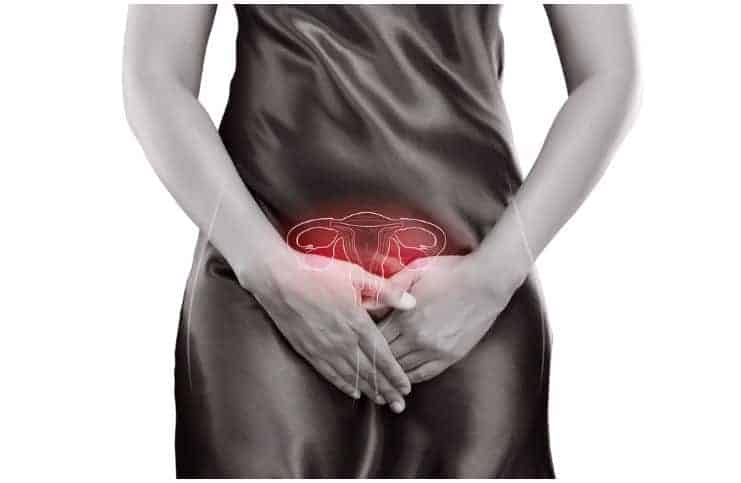Bacterial vaginosis
Bacterial vaginosis, also referred as vaginal bacteriosis, is an abnormal vaginal condition which results from an overgrowth of atypical bacteria in the vagina and is described by vaginal discharge.
BV is usually a mild problem that may go away on its own in a few days. However, it can lead to more serious health problems. 29.2% of American women aged 14-49 experience this condition, according to the Centers for Disease Control and Prevention.
Symptoms
- itching around the outside of the vagina;
- burning during urination;
- foul-smelling “fishy” vaginal odor. This smell can get stronger after sex or during your period;
- Thin, gray, white or green vaginal discharge.
Note – approximately 50 percent of all women with BV will have no symptoms. Furthermore, this condition may occur at the same time as other sexually transmissible infections.
Causes
- There is a careful balance between the bad and good bacteria which live in the vagina, and when that balance is disrupted, BV can occur.
- Sexual activity which could lead to transmission (for example, a recent increase in the number of sexual partners).
- Putting antiseptic liquids in the bath.
Note – according to statistics, BV risk is higher among women who are living in poverty, women who are obese, smokers and drug abusers, and women who have low levels of education.
Treatment
BV doesn’t necessarily have to be treated with allopathic medicines – if there are no symptoms. Nevertheless, for the women that need it, the most common medications prescribed for this condition are clindamycin or metronidazole. These may be given as pills which are taken by mouth.
Note – if you are pregnant (approximately 20 percent of women have BV at some point during pregnancy), it is essential that you seek treatment because you can be at risk of complications including premature delivery and miscarriage.
Vaginal Yeast Infection
Vaginal yeast infections, also known as vaginal thrush and candidal vulvovaginitis, is caused by the organism Candida albicans. It is estimated that 3 out of 4 women will suffer from VYI at one point in their lives, and up to 45 percent have two or more.
It is not a sexually transmitted infection. However, it can spread during intercourse or through oral-genital contact, with 12 to 15 percent of men developing symptoms, like -penile rash and itching following a sexual contact with an infected partner.
Symptoms
- a thick, white discharge which can look like cottage cheese and is commonly odorless;
- vaginal itching;
- pain during sex, that may make you worry about having sex;
- swelling and redness of the skin just outside of the vagina.
Causes & Risk Factors
VYI is commonly caused by an overgrowth of a type of fungus called Candida. Overgrowth of this fungus can result from:
- antibiotic use that decreases lactobacillus bacteria (a type of good bacteria) in your vagina and changes the pH of your vagina;
- taking birth control pills or hormones;
- wearing clothing which keeps the vaginal area moist and warm, like – pajama bottoms, synthetic underwear, and tight jeans;
- having diabetes;
- lack of physical exercise;
- lack of sleep (less than 7 hours per night);
- stress.
Note – VYI is more likely to develop if the immune system is impaired by a disorder (AIDS) or weakened by prescription medicines (like – chemotherapy drugs or corticosteroids).
Treatment
Treatment for this condition usually includes an antifungal medication. This may be either as:
- A cream such as clotrimazole (the antifungal cream is applied to the affected area once per day before bed, for approximately a week).
- Oral medications, like – fluconazole – the majority of sufferers only need one dose. Nevertheless, women with more complicated infections (like those with recurrent yeast infections or underlying medical problems) may require a 2nd dose three days after the first dose.
Note – for some women, VYI can be difficult to treat and keeps coming back. Moreover, this condition is also common during pregnancy. Thus, if you are pregnant, don’t use any type of medicines without talking to your health care specialist first.
Bottom Line – Bacterial Vaginosis vs Yeast Infection
Both conditions have similar symptoms and causes. However, BYI is more severe and usually doesn’t go away without prescription medications.
Prevention
Douching Is Bad
Don’t feel the need to ”wash” your vagina by pushing detergents and water up there.
Use Condoms
Condoms are the best method to prevent this condition when you have sex.
Change Your Tampons Frequently
When you have your period, change your tampons and pads often.
Avoid Scents And Perfumes
Limit your bubble baths and don’t use any products with perfumes or scents in that area.
Diabetes
If you have diabetes, keep your glycemic levels as close to normal as possible.
Cotton Underwear
Cotton underwear doesn’t hold in moisture and warmth and helps to keep you dry.
Eat Foods High In Vitamin C
Vitamin C supports natural killer cell activity and antibody production and activity, which is vital for a healthy immune system. Foods high in vitamin C include grapefruits, chestnuts, oranges, prunes, lemons, tangerines, strawberries, persimmons, red cabbage, limes, kiwis, cauliflower, mangoes, clementines, broccoli, bell peppers, kale, spinach, brussels sprouts, papayas, and pineapples.
READ THIS NEXT: Symptoms of Splenic Flexure Syndrome
Referrence https://www.health.harvard.edu/staying-healthy/how-to-boost-your-immune-system https://www.ncbi.nlm.nih.gov/pubmed/19263912
